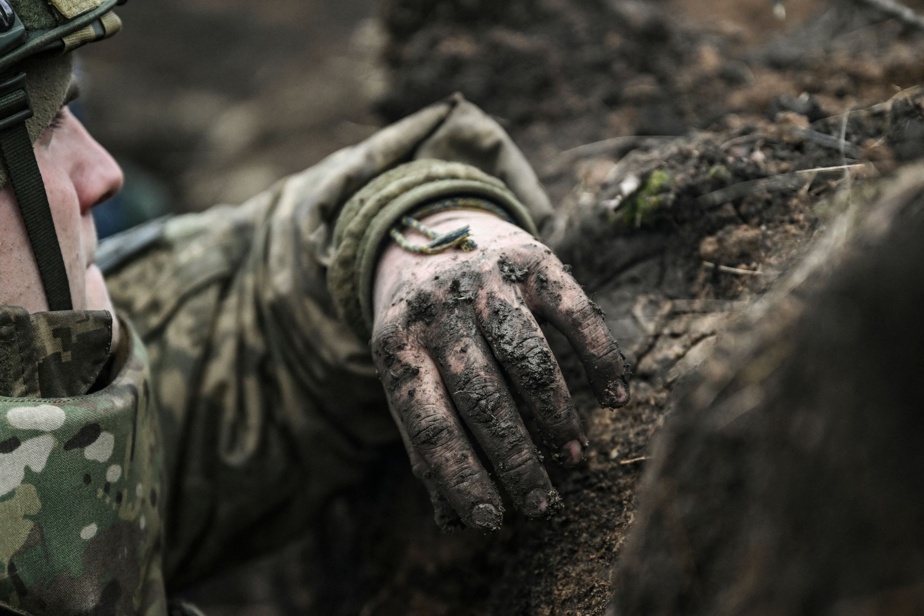The Russia-Ukraine war is a scandalous and unnecessary drama.
Useless insofar as a realistic and reasonable peace plan, respecting the demands of the various parties, can be defined. Talking peace in times of war should be the role of diplomats on all sides. In the current context of the Russia-Ukraine conflict, diplomats have unfortunately become spokespersons for ministers of war. A peace plan can only be defined by providing nuances. Formulating them is always dangerous in times of crisis, but necessary.
The war can only end when realistic and credible security conditions for all parties are met. Ukraine wants to be able to develop socially, politically and economically while respecting its borders and its choices, without undergoing the continual, stressful and threatening presence of a sword of Damocles. Russia too. Like Finland, Georgia and all other countries. How can we manage to satisfy all these demands within the framework of a multiparty agreement that respects each other?
To achieve this, we will have to have the courage to realize that we, Ukrainians, Russians and Westerners, are currently mired in a vicious circle, where each camp reacts to the actions and strategies of the other. A balance of rational but myopic reactions has developed over almost 15 months: the United States-European Union-NATO coalition has refused Russian demands to ensure its security, Russia has positioned itself at the gates of the ukraine, the United States-European Union-NATO coalition has toughened its tone and announced NATO’s military build-up on Russia’s doorstep, Russia has invaded Ukraine, continued and increased its attacks, the coalition states -European Union-NATO has imposed a series of economic and diplomatic sanctions on Russia, its leaders and their oligarch friends, Russia has intensified its attacks on cities and citizens in Ukraine, the coalition has escalated sanctions against Russian institutions, athletes, artists and ordinary citizens. And we start over and over again.
A back and forth of seemingly rational strategic behavior, but leading us inexorably to an infernal descent into the depths, on the backs of the most vulnerable populations, from Ukraine to the fore.
To get out of the bad balance in which we have locked ourselves mutually, it will be necessary on both sides to have the courage to show empathy, to reach out to the enemy of the moment (the friend of tomorrow) and to recognize his suffering and his right to a safe existence. Difficult indeed, but necessary. The search for a win-win balance on the basis of a Russia–US–EU peace treaty is more subtle and intellectually and morally more demanding than the pursuit of war, but this search is essential to the good – to be of all ordinary populations devastated or scarred by war.
The current bad balance is increasingly stabilizing with the increasing shipment of heavy weapons to Ukraine and the intensification of Russian attacks. Russia and the West through Ukraine are pursuing the same, most likely illusory goal of bringing the other side to its knees. The increasing development of war will reach a point of no return, perhaps already reached. Today we risk being entangled and chained in this bad balance for quite some time, with its daily lot of suffering, misfortune and destruction as terrible as they are avoidable.
The war in Ukraine is for no reason setting back civilization for decades. The fallout on civilizing free trade is seriously undermined on both sides, under the predominant impetus of the Americans. And this, to the detriment of the citizens of the world, Ukrainians and Russians above all, but also Europeans, Americans, Canadians and others.
To avoid the continuation of the Russia-West conflict in Ukraine and the possible emergence of possible conflicts in the regions bordering Russia, we would need a country or a group of countries capable of proposing a Russia-West treaty (United States – European Union) in three parts: first, the definition of a buffer zone between the military of Russia and NATO (United States-European Union); then, a formal commitment by the parties to respect the borders and the social, political and economic choices of each other; finally, an equally formal commitment by the parties to intervene militarily if one of them were to venture militarily into the territories of the buffer zone. This buffer zone between the military of Russia and NATO (United States-European Union) would be made up of the countries bordering Russia, namely Sweden, Finland, Estonia, Latvia, Lithuania (?) , Belarus, Ukraine, Georgia and Azerbaijan. A “defensive-type” treaty or alliance, like NATO, based on responsible freedom and a reasonable balance with incentive guarantees.
In exchange for a guarantee from Russia and the West (United States-European Union) to respect the social, political and economic choices of the countries in the buffer zone, these countries, led by Ukraine, would commit to a international neutrality “à la Suisse”, outside NATO and the European Union.
Under the auspices of a reinvigorated World Trade Organization, the treaty would guarantee the right of these countries to enter into trade agreements with Europe and Russia and other parts of the globe, such as China, Africa and the America.
The leaders of the buffer zone states could focus their energies on the socio-political and economic development of their respective countries, in complete safety and freedom. Nothing would prevent them, for example, from remaining members with Russia of the Council of Europe and other organizations for international consultation and cooperation.
Volunteers to carry this message?

